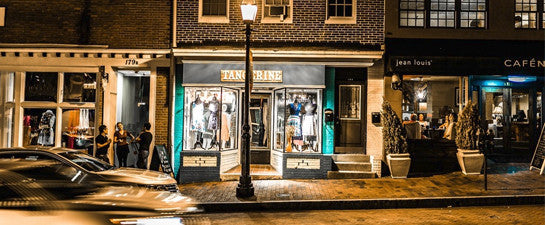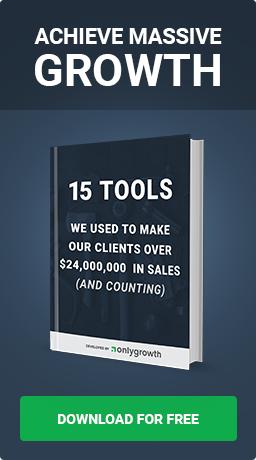How To Halloween-Proof Your Ecommerce Site & Stop Scaring Customers Away
Oct 18th, 2016

Your customers may be afraid of you…
Or at least your site.
It’s Halloween, a time when many of us dress up as ghosts, ghouls, and ghastly horror movie legends and attempt to scare the people we love most.
But you may also be inadvertently scaring away customers and costing yourself sales as many ecommerce merchants do. In fact, an estimated $4 trillion in ecommerce merchandise will be abandoned in online shopping carts this year by consumers who experience some type of fear or friction along the path to purchase:

Image via: Business Insider
The research indicates approximately two thirds of your visitors will abandon cart for some reason.
How many of the remaining third will never even make it to the checkout?
Halloween may be a time to put on your scariest face but frightening customers before or during the checkout experience is a problem that must be addressed if you want to optimize your site’s conversion rate in time for the all-important holiday shopping season about to begin.
While a myriad reasons exist regarding why visitors leave sites like yours without purchasing something, we’ll look at three that may be scaring customers away from your site and identify fixes you can implement immediately to optimize conversions in time for the holiday shopping season.
Scare #1: Customers Presented with Unexpected Costs at the Checkout
Surprises can be scary…
In a recent survey, 56-percent of respondents said one of the main reasons they did not complete a purchase on an ecommerce site was because of unexpected costs they encountered during the checkout:

Image via: Statista
What type of charges unexpectedly show up that cause shoppers to abandon cart?
There are three main categories, according to Practical Ecommerce:
- Higher than expected shipping charges
- Unanticipated processing fees or taxes
- Automatic cross-sells.
The Takeaway
Surprises are good when they come in the form of parties or gifts not additional costs at the checkout. Eliminate surprises by making shipping promises prominent on your site well before shoppers get to the checkout.
For instance, when NuFace, an anti-aging skin care company, added a free shipping threshold to its site, orders increased 90-percent:

Image via: Red Door
Not convinced?
Even if you’d rather not offer free shipping or free shipping thresholds due to high return rates you can still eliminate surprises at the checkout and boost conversions by telling shoppers upfront what an item is going to cost to ship.
For example, prior to offering its Prime service, which offers free shipping on all orders for a flat yearly fee, Amazon eliminated pricing shocks at the checkout by clearly highlighting shipping costs next to product thumbnails:

Image via: Practical Ecommerce
Scare #2: Shopper Isn’t Ready to Purchase
It’s not you it’s me…
That may not be an excuse we buy when someone we love unexpectedly breaks our heart but it’s certainly true in the case of ecommerce shoppers.
In fact, eMarketer conducted research that discovered 57-percent of shoppers abandoned their shopping carts simply because they got cold feet and weren’t ready to make a commitment or purchase:

Image via: eMarketer
It’s an age old issue especially when you consider consumers routinely window shop brick and mortar stores without any sense of urgency to make a purchase.
But digital window shoppers aren’t lost causes...
In fact, shoppers who place something into their carts but leave without completing the checkout are actually dropping hints you can use to target them later and increase the chances of converting them in the future.
The Takeaway
Shoppers who abandon cart because they’re not ready have demonstrated an intent to purchase or, at the very least, an interest in a specific product.
This is valuable insight...
Consider a remarketing program that shows these shoppers PPC ads while surfing the web elsewhere that include images of the items they abandoned in cart. Retargeting can not only dramatically increase conversions but also generate outsized ROI.
Fort instance, the digital marketing firm AdRoll, says it can retarget users across 500 ad exchanges and says its customers earn $10 for every dollar spent on retargeting.
Results like this are similar regardless of niche;
- Online tire seller Tirendo credits remarketing with a 161% increase in conversions
- Loews Hotels credits remarketing with a 10% increase in revenue
- Custom printer Storkie Express credits remarketing with a 203% increase in conversions
However, proceed with caution as retargeting can be perceived as stalking and make shoppers uncomfortable if retargeted ads are shown too often thus annoying shoppers and adversely impacting conversion rates:

Image via: Inskin Media
Separately, target shoppers who abandon cart and who have provided their email with relevant and personalized email messages following abandonment. Research suggests personalized email sent several hours after a customer abandons cart can garner a 20-percent CTR and a 40-percent open rate.
Scare #3: UX Creates Purchase Friction
Site usability issues can act as detours between purchase intent and checkout. These issues include:
- Slow page loads
- Unresponsive site design
- Non-custom checkouts that whisk shoppers off your site & create unease
Despite out of the box solutions like Shopify Plus, an enterprise ecommerce solution for high volume merchants, research suggests UX issues persist today:
- 25% of shoppers decided not to purchase because site navigation was too complicated
- 24% of shoppers decided not to purchase because a site crashed
- 21% of shoppers decided not to purchase because the checkout process took too long
UX hiccups can scare consumers and have a material impact on your conversion rate...
The Takeaway
Simplicity and intuitiveness are an ecommerce site’s best friends. Reduce the number of steps between purchase intent & checkout while simultaneously empowering customers and reducing the inhibitions they have about checking out:
Optimize the Checkout Form
Three primary design issues common among checkout forms include:
- They fail to reduce fear.
- They fail to build trust and credibility.
- They fail to reinforce benefits
Reducing the number of steps between intent and purchase, as Amazon does with it’s one click checkout option, builds trust and reduces fear by making it easy for consumers to do what they want quickly and with little effort.
Similarly, you can reinforce the benefits by allowing guest checkouts and not forcing people to register to make a purchase which can be perceived as the equivalent of waiting in a long line at a checkout counter at a brick and mortar store.

Image via: Econsultancy
In fact, User Interface Engineering reports a 45% growth in sales when registration requirements were removed and a guest checkout option was offered.
BONUS: Build trust by designing a cart that is easy to edit. Shoppers who cannot easily remove an item from their cart may abandon the entire cart.
Additionally, reduce fear, build trust, and reinforce benefits with a checkout experience that also includes:
- Applications that include customer reviews and social proof designed to persuade skeptical consumers
- Create urgency among shoppers who appear to be ready to abandon cart by offering multi-part pop ups that capture emails and offer unique discount codes to be used at checkout
Final Thoughts
Creating a user experience that doesn’t scare shoppers will pay dividends long after the upcoming holiday shopping season. Reduce the fear that can negatively impact your conversion rate by being customer centric:
- Eliminate checkout surprises by highlighting all of the costs associated with a product and consider free shipping thresholds
- Retarget digital window shoppers with relevant and personalized PPC ads and email campaigns shortly after cart abandonment
- Build friction free checkout forms that empower consumers and simultaneously build trust and emphasize the benefits of choosing you or your product
Halloween may be a perfect time for scares and spooks...
Just be sure your ecommerce site is a scare-free zone!



